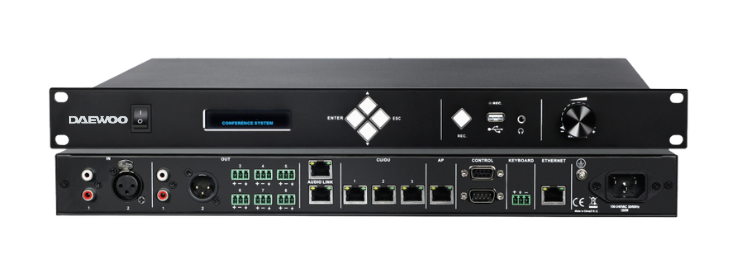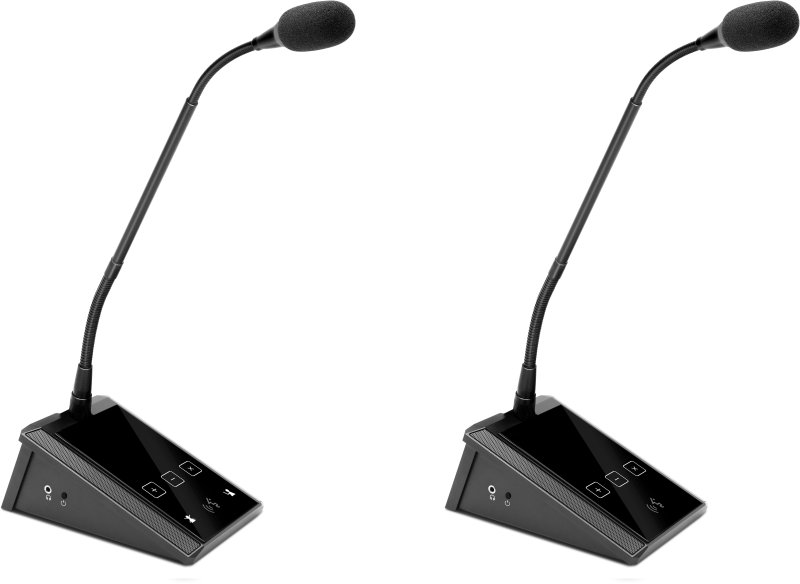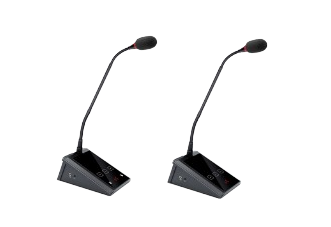Features
· The DCS-2000W controller manages up to four separate rooms and supports expansion by linking multiple controllers for larger setups.
· Independent control of four microphone groups is also possible.
· The "Daisy-Chain" design guarantees uninterrupted operation, even if units are replaced or malfunction.
· Microphone sensitivity and 8-band EQ can be customized for each unit, while the main controller provides a 16-band EQ for refined sound adjustments, volume control, and automatic noise gate detection.
· Additional features include automatic volume adjustment, feedback suppression, and intelligent mixing.
· The system supports zone-specific audio outputs, automatically balancing levels based on microphone placement, ensuring clear sound capture over longer distances without feedback.
· Echo suppression, two-way communication with other systems, and integration with third-party conferencing solutions are included.
· It offers memory (via a USB stick) for recordings, a built-in CPU with memory for processing, advanced noise reduction for clarity, and monitoring capabilities. Additional features include time management, countdown timers, and optional support for digital audio integration through extra modules.
· The system includes an additional output port (RJ45) for connecting specialized units like control, participant, or interpreter devices.
· It also supports PoE speakers, powering two 120W units or expanding to manage up to 16 speakers with extension modules, offering scalable and versatile use for various settings.
Functions
· The system connects to a digital extension main unit, supporting up to 5,200 discussion units.
· It utilizes a Daisy-Chain design, ensuring each unit has a unique ID to prevent conflicts.
· Both wired and wireless discussion units can connect to the controller, enabling easy participant addition.
· It supports up to 8 wireless microphones simultaneously, utilizing interference avoidance technology that complies with IEEE 802.11n standards for 5GHz Wi-Fi, enhancing anti-interference capabilities.
· The system provides 2 audio input channels (XLR or RCA) for local or remote audio sources and up to 8 audio output channels (XLR, RCA, or modular connectors) for translation or zone outputs.
· An additional input module allows connection of various microphone types, including condenser and dynamic options.
· The built-in multi-way communication feature supports seamless internal interaction.
· TCP/IP connectivity links the controller with a PC, while RS232 central control manages microphone switches, volume control, and priority settings.
· RS232 or RS485 interfaces enable camera tracking through compatible protocols.
· The system supports hot plug-and-play functionality and automatic recovery. It operates within a voltage range of 100V to 240VAC.
· The controller allows: Limiting active microphones: 1, 2, 4, or 6 units, with support for up to 32 wired microphones in full-on mode. Discussion modes: "OPEN" allows free speech, limited by active units; "VOICE" activates microphones via sound detection; "OVERRIDE" follows first-come, first-served; "APPLY" requires speech requests; "PTT" (Press-to-Speak) is optional; "ALL" enables simultaneous speech (optional). This version avoids overlap with other products.
| Model | DCS-2000W |
| Power | 100V / 240V AC |
| Power consumption | 12W |
| Maximum power consumption | 150W |
| Frequency Response | 20Hz ~ 20KHz |
| Noise ratio | 96dBA |
| Dynamic range | 94dB |
| Total harmonic distortion | 0.05% |
| Channel Crosstalk | 85dB |
| Ethernet control | RJ45 connected to PC |
| Dimensions (mm) | 481L x 265W x46H |
| Weight | 3kg |








